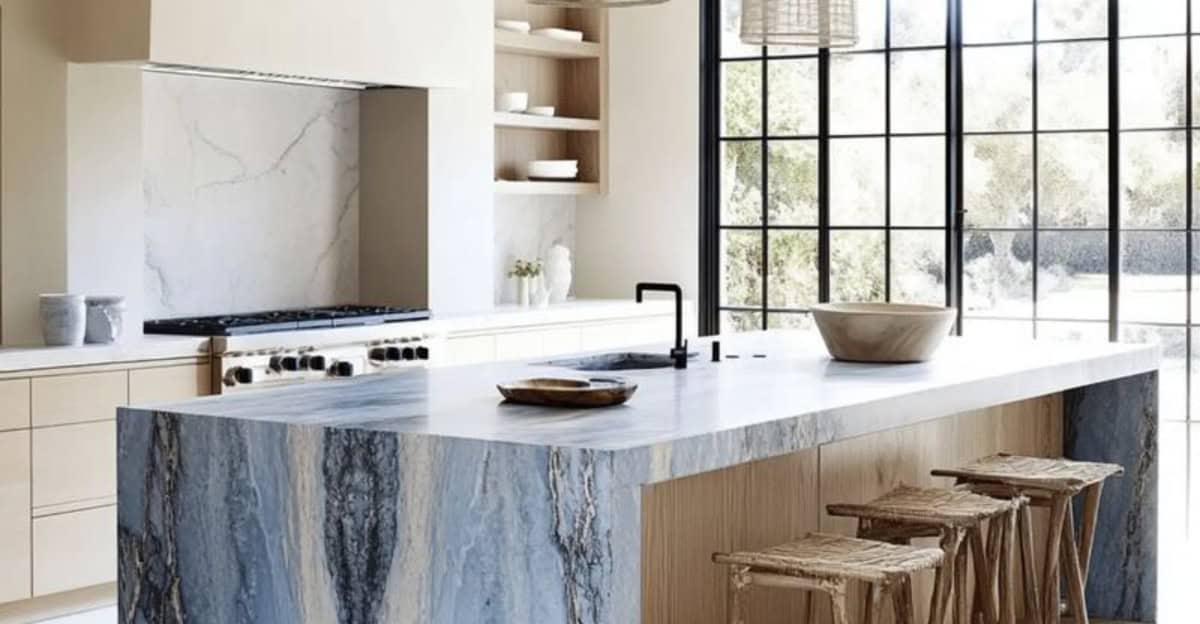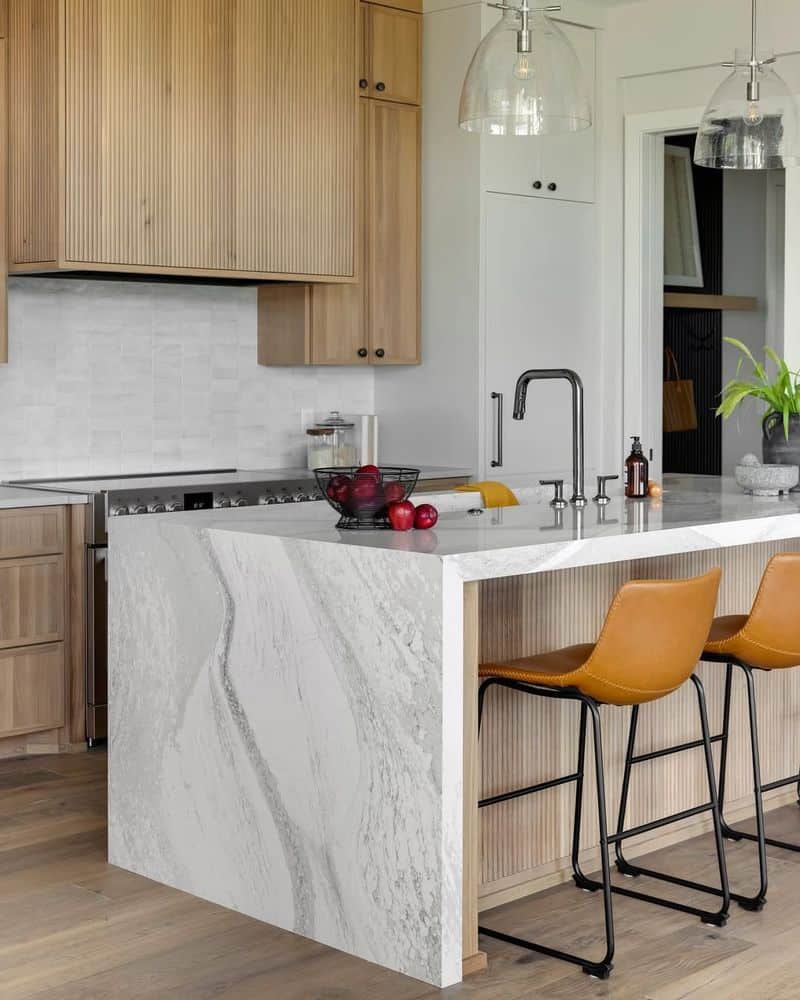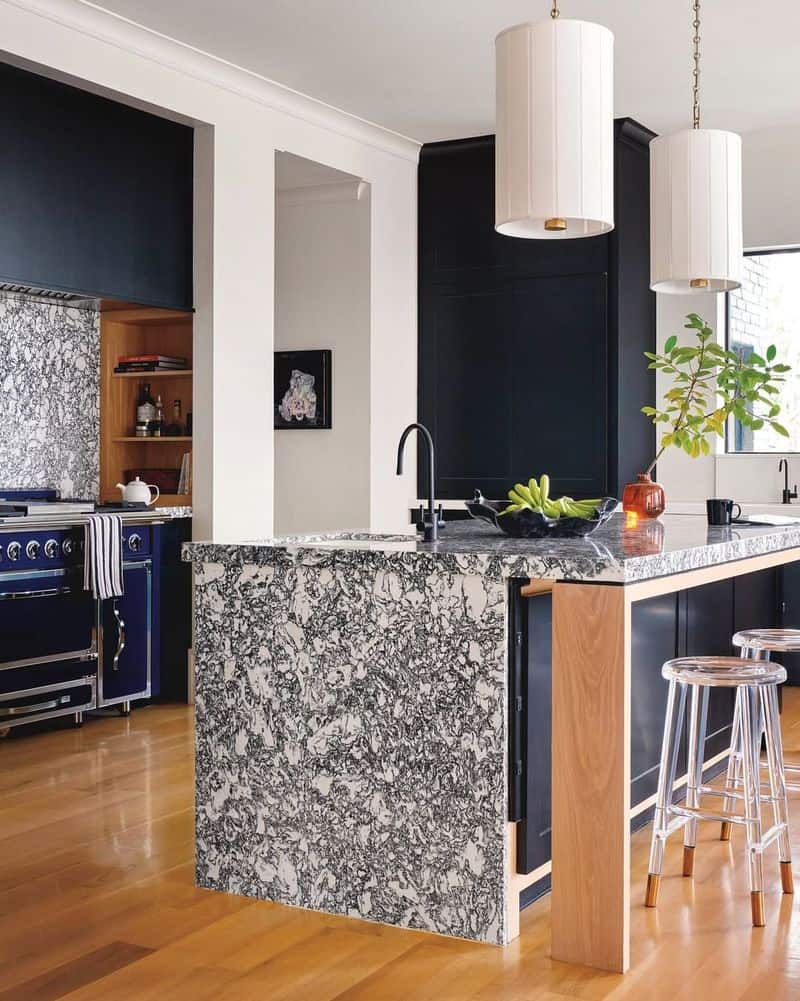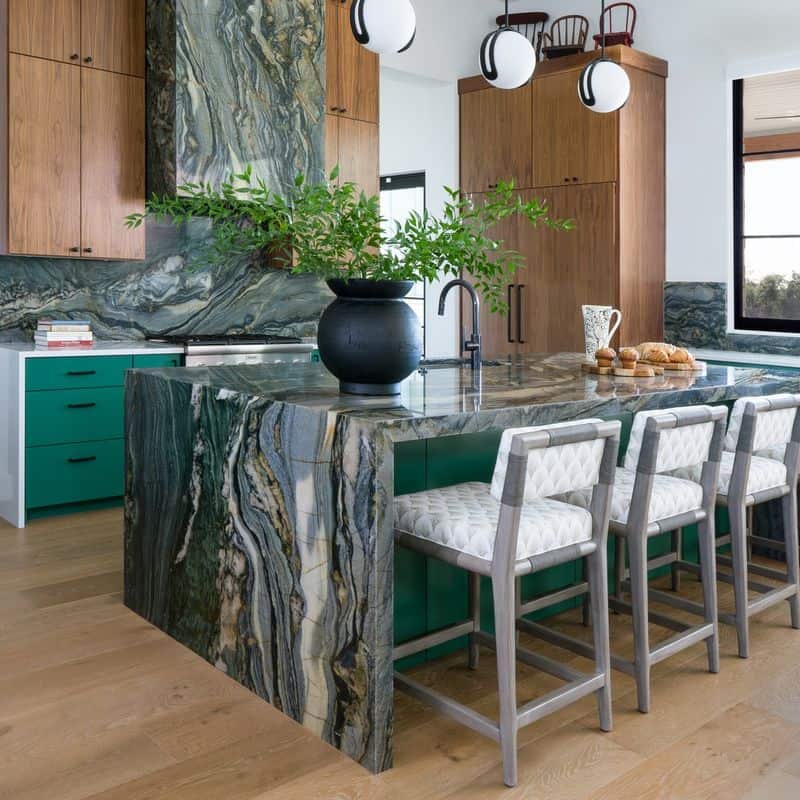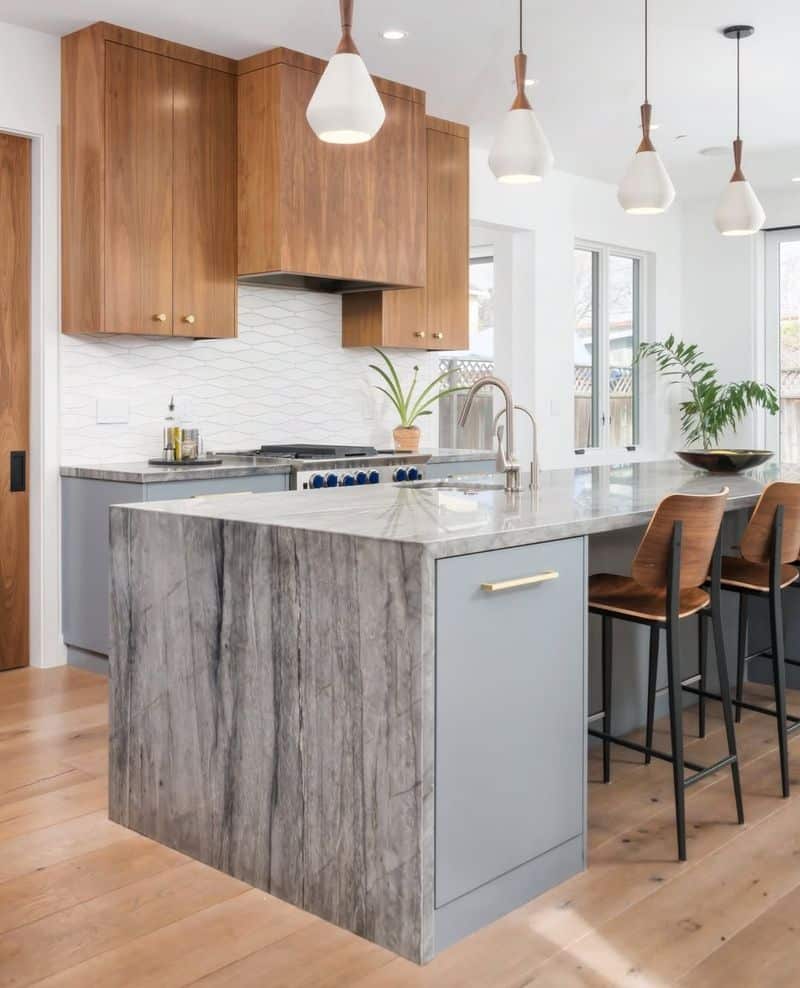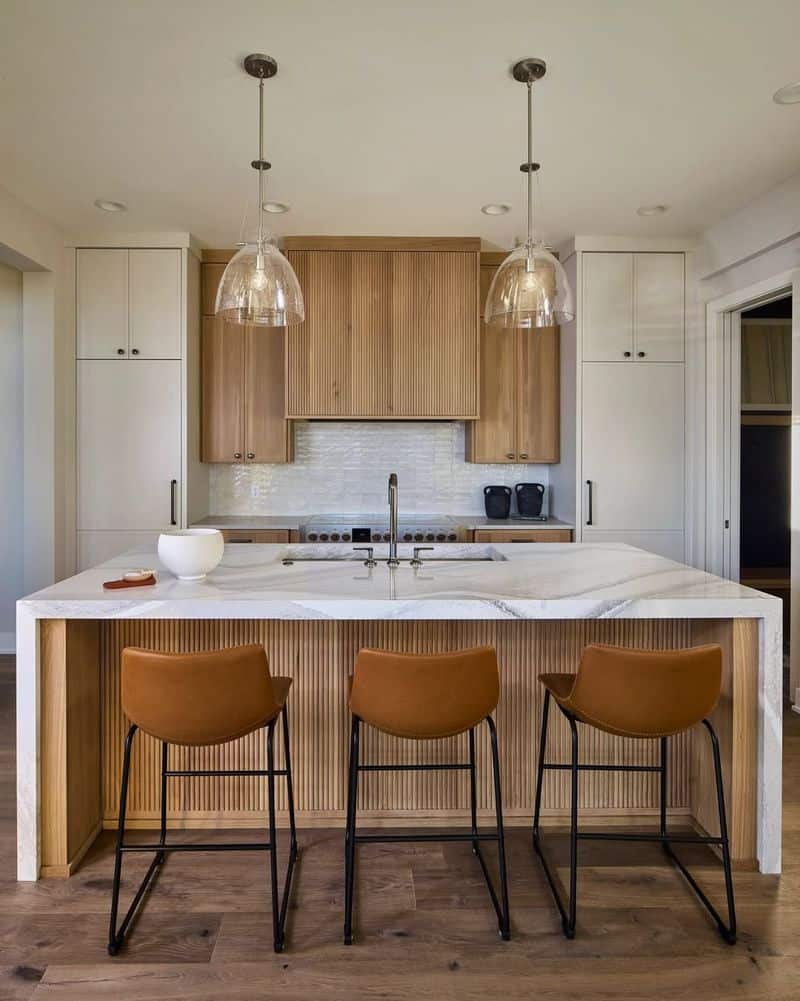Waterfall kitchen countertops are admired for their sleek appearance and modern aesthetic, but they’re not without flaws. Despite their popularity, there are several issues that homeowners often overlook.
From the impact on your kitchen’s design to practical challenges, these problems may make you reconsider investing in one.
Below, we explore 10 problems associated with waterfall kitchen countertops that deserve more attention.
1. Higher Cost
Waterfall countertops are known for their stunning appearance but come with a steep price tag.
These countertops require more material as they extend down the sides of the cabinets, increasing costs significantly.
Furthermore, the installation process is more complex, often requiring skilled professionals, which adds to the expense.
Choosing high-end materials can further escalate the price, making this option less budget-friendly.
While the aesthetic appeal is undeniable, homeowners should weigh the cost against their budget priorities.
Considering alternative styles could provide a similar look without breaking the bank, keeping the kitchen both stylish and affordable.
2. Installation Challenges
Installing a waterfall countertop isn’t as straightforward as it may seem. The process demands precision and skill, often resulting in a frustrating experience for installers.
The seamless flow from countertop to floor is what makes the installation so complex. Mistakes during installation can lead to visible seams and uneven surfaces.
Moreover, the heavy materials require extra support and careful handling. Homeowners should prepare for potential delays and unexpected issues during installation.
Hiring an experienced professional is crucial, though it can add to the overall cost, ensuring the countertop is properly fitted.
3. Limited Seating Options
The sleek design of waterfall countertops can unintentionally limit seating space in the kitchen. Unlike traditional countertops, the vertical drop means fewer overhangs for bar stools.
This can be particularly inconvenient for families who enjoy meals at the kitchen counter or entertain guests frequently. The limited seating may require additional dining arrangements.
Homeowners should consider whether the aesthetic value outweighs the practicality of having adequate seating.
Incorporating a separate dining area or choosing a different countertop design might be necessary to meet seating needs without sacrificing style.
4. Potential for Damage
Waterfall countertops are prone to damage, especially along the edges. The continuous surface design makes them vulnerable to chips, scratches, and other wear-and-tear.
High-traffic kitchens may see these damages accumulate quickly. Selecting durable materials can mitigate potential issues, but no material is entirely immune.
Regular maintenance and caution during use are essential to preserve their pristine appearance.
Homeowners need to assess their kitchen habits and whether a waterfall countertop can withstand daily activities without requiring constant repairs or risking lasting damage.
5. Design Compatibility
While waterfall countertops are visually striking, they may not suit every kitchen design. Their modern look can clash with traditional or eclectic styles, creating a disjointed appearance.
Homeowners should carefully consider the overall aesthetic of their kitchen and ensure the countertop complements existing elements.
A mismatched design could impact the room’s harmony and overall appeal.
Consulting with a design expert can provide insights into whether a waterfall countertop will enhance or disrupt the kitchen’s style.
A harmonious design ensures the countertop is a stunning centerpiece, not an awkward addition.
6. Space Constraints
In smaller kitchens, waterfall countertops can dominate the space, leaving little room for movement and making the area feel cramped. Their imposing presence can overshadow other elements.
Such countertops require a significant amount of space, which might not be feasible in compact kitchens. Homeowners should evaluate the available area and how a waterfall design might affect functionality.
Considering alternative styles that maximize space without compromising on style could be beneficial.
Prioritizing space efficiency ensures the kitchen remains practical and comfortable for daily use, without the countertop overwhelming the room.
7. Outdated Trends
What’s trendy today might be outdated tomorrow. Waterfall countertops, while currently fashionable, may not stand the test of time.
Rapid changes in design trends can leave homeowners with a style that feels passé.
Investing heavily in such a trend risks your kitchen looking dated in just a few years. This concern is especially pressing for those planning to sell their home in the future.
Choosing a more timeless design can prevent the need for frequent kitchen updates. Balancing current trends with classic elements ensures the kitchen remains stylish over the long term.
8. Electrical Outlet Installation
Incorporating electrical outlets into a waterfall countertop design can be challenging. The sleek, continuous look often leaves no room for additional fixtures.
This lack of outlets can pose a problem for homeowners who rely on kitchen appliances and need accessible power sources.
Innovative solutions, like pop-up outlets, might be necessary but add complexity and cost.
Considering the practical needs of a kitchen is crucial before committing to a waterfall design.
Ensuring functionality doesn’t take a backseat to aesthetics guarantees the kitchen remains efficient and convenient for everyday use.
9. Material Limitations
Not all materials are suitable for waterfall countertops. The need for durable and aesthetically pleasing materials can limit choices.
Soft stones or composites may not provide the necessary strength to extend down the sides without risking damage. This limitation might restrict homeowners to a narrower range of options.
Evaluating the durability and long-term performance of potential materials is essential.
Considering alternative materials that align with both design preferences and practical requirements ensures the countertop will withstand daily use without compromising on style.
10. Resale Value Considerations
While waterfall countertops are trendy, their appeal may not resonate with all buyers. This can affect the home’s resale value, especially if the buyer prefers a different style.
Potential buyers might view the countertop as a costly feature they would need to replace, impacting negotiations. Homeowners should consider how the design choice aligns with market trends.
Opting for a more universally appealing design can enhance resale prospects.
Striking a balance between personal taste and broad market appeal ensures the kitchen remains attractive to potential buyers, safeguarding the investment in the home.

